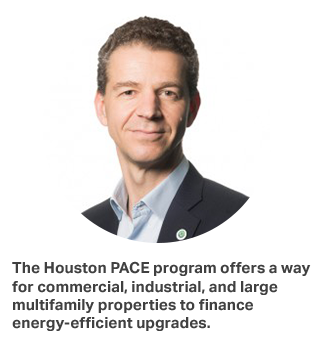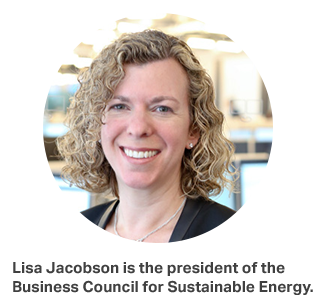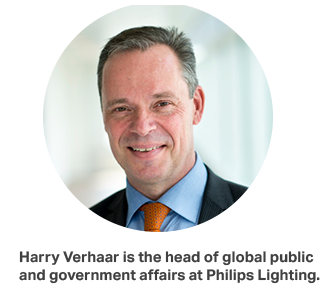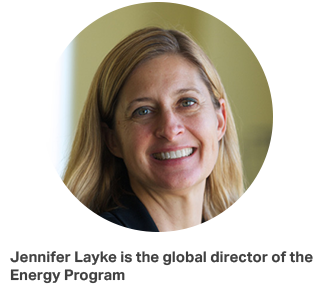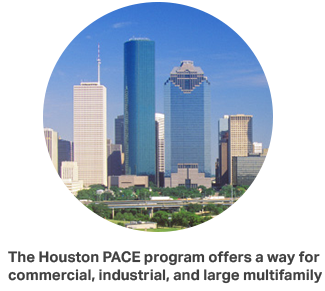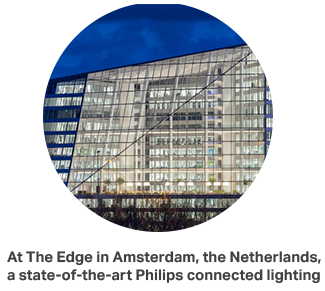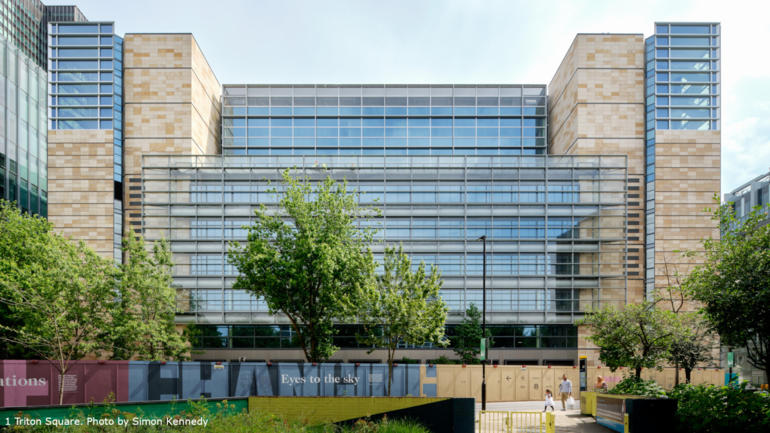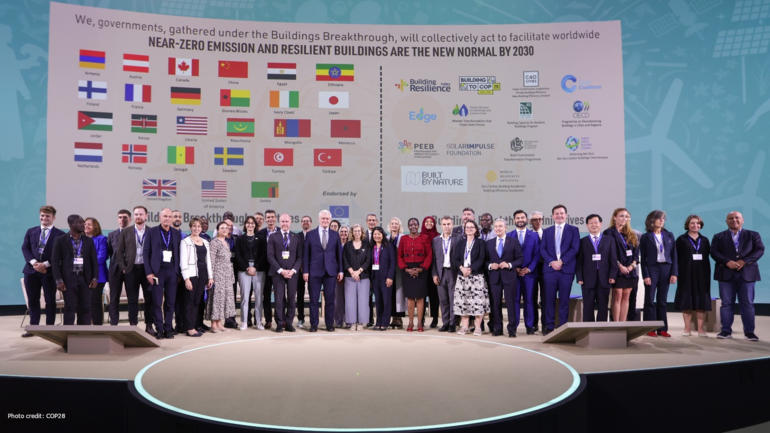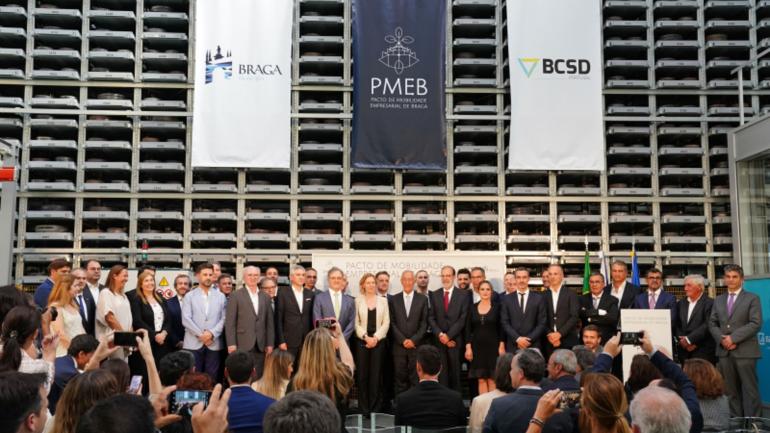As far back as the 1992 Rio de Janeiro Earth Summit, the private sector was talking about its potential role in global climate discussions and sustainable development, though it wasn’t until more than two decades later that businesses finally took a seat at the negotiating table
“In Rio in ’92 was where for the first time a group of CEOs met and said, ‘Business has to be at the table when we talk about global sustainable development,’” says Roland Hunziker, the director of Sustainable Buildings and Cities, at the World Business Council for Sustainable Development (WBCSD).
It took three years for the WBCSD to evolve from those early informal discussions into a formal, global nonprofit group of more than 200 leading businesses and partners that are working to accelerate the evolution toward a more sustainable world. However, even that transformational inclusion happened slowly, with private sector participation typically taking place on the fringes of global climate gatherings, Hunziker says.
At the early Conferences of the Parties (COP), which refers to the countries that signed the 1992 United Nations Framework Convention on Climate Change, “We organized a business day, but it was always somewhere else,” says Hunziker, who himself got involved in business through the back door, with a history and economics background that initially led him into humanitarian work. “Our business day was off site, and business talked to business, with sometimes a negotiator showing up or some government officials.”
By 2015 in the months leading to COP21-the historic climate agreement signed by 195 countries pledging to take actions to keep global temperatures from rising more than 2 degrees Celsius due to climate change-businesses were prominent in voicing support for a strong agreement.
And with COP21 in Paris that December, it was clear that things had finally changed with business interests deeply engaged and credited with a key role in the conference’s outcome.
At the conference itself, business interests, opportunities, and solutions were on display in official side events and a new innovation center.
Finally, the private sector was recognized as a force capable of implementing the abstract ideas and goals around climate change by global leaders on a more realistic and local level.
This trend continued into COP22, convened last November in Marrakech, Morocco. “What is very significant about this COP is it [was] very focused on what is happening on the ground, the action agenda, and where the Business Council for Sustainable Energy (BCSE) and its members have a tremendous amount to offer,” explains Lisa Jacobson, president of BCSE, adding that at COP22, the business voice was very strong. “Partnership is the way the business community can show governments we have solutions to offer. Any investment involves multiple actors, often at all levels of decision making, from local, to state, to the federal level of government, and to the private sector,” Jacobson continued. “Partnerships help create access to understand market needs and to dramatically increase the efficiency of decision making.”
The new paradigm for business engagement in climate issues didn’t happen by accident. Responding to sustained interest by WBCSD and many other business groups around the globe, the past and current presidents of the COP-Peru and France-formed the “Lima Paris Action Agenda” to embrace the critical roles of business and civil society. Under this rubric, COP21 featured Action Days focused on key sectors of the economy-such as buildings.
Fittingly, it was at the first-ever COP Buildings Day that the new Global Alliance for Buildings and Construction (GABC) was announced, as Hunziker explains, “We actually joined forces with many other partners, among them the World Green Building Council and the U.S. Green Building Council (USGBC) and others.” This past year has been dedicated to determining what the GABC is going to do: “It has developed a high-level ambition that we need to bring the construction sector on the below-2-degree path,“ aligning with the action focus of COP22 in Marrakech, Morocco, Hunziker says.
While energy use in buildings and for building construction currently represents more than one-third of global final energy consumption and contributes to nearly one-quarter of greenhouse gas (GHG) emissions worldwide, building floor area is growing globally with increased population and urbanization. Pushing this growth to net-zero carbon is critical, as the building sector offers the largest cost-effective GHG mitigation potential. According to a key GABC report, staying below 2 degrees means, for the building sector, “avoiding at least 50 percent of projected growth in energy consumption through mainstreaming of highly energy-efficient, near-zero, net-zero energy and energy-plus buildings in new construction as well as massive uptake of deep renovation of the existing building stock by 2030.”
At the COP22 Buildings Day in Marrakech, notable announcements included USGBC’s participation, along with a cadre of nine other green building councils around the globe, in the World Green Building Council’s Advancing Net Zero project. Advancing Net Zero focuses on developing and deploying programs to recognize net-zero carbon buildings. “GBCI’s new performance platform-Arc-will drive even more focus on building performance and enable increased transparency of carbon impact along with other critical metrics,” says Mahesh Ramanujam, President and CEO, USGBC and GBCI. “We are creating new pathways for recognition of net-zero carbon energy to push the market toward a future where buildings not only protect, but also restore the climate and give back to the environment.” The net-zero model dominated the dialogue on buildings at COP22, among public and private sector leaders alike.
While the presence of the private sector at COP22 was the strongest it has ever been, a group of more than 300 businesses also mobilized after the U.S. election-which occurred during COP22-to send a message in support of the Paris Agreement to then-President-elect Trump and to the assembled global community. These companies, which included over a dozen Fortune 500 firms, largely represented consumer-facing brands with sustainability values and identities, but also included investment firms, chemical companies such as DuPont, health, clean energy, and tech firms. Oil and gas firms were at COP22 as well; certainly, shifts in government energy policy affect their investments and business. Proponents of private sector involvement say they believe that even oil, gas, and coal companies can and have committed to “walk the talk.”
Private sector advocates believe there are many excellent reasons that businesses in industries as wide-ranging as cement, transportation, chemicals, technology, energy, lighting, and consumer products, must be involved in the effort to address climate change.
Hunziker says that, besides all the bells and whistles of technology, such as new breakthroughs in energy storage, perhaps one of the most important qualities that the private sector can offer to the climate change discussions is “business thinking.”
“We can bring the business models and the finance models to implement projects that really change our trajectory,” he says. “With my work, especially in cities, we see that the challenges are complex-it’s energy, it’s water, it’s social inclusion, it’s mobility-and you often see approaches that accomplish one thing but may not be aware of other consequences.”
By 2050, it’s anticipated that 70 percent of the world’s population will live in an urban area, with the biggest growth in emerging markets like China, India, and in fast-growing African economies in South Africa, Kenya, and Ghana. And buildings are predicted to account for 30 percent of global emissions by 2030, so the right investment choices in building construction and retrofitting are critical.
“We really need implementation partnerships for the new urban agenda,” Hunziker says. “So we’re on a journey toward working more in collaboration-we need to work in local markets and bring building stakeholders together and really drive action plans on energy efficiency.”
The need for collaboration to achieve maximum impact is what led to the Global Energy Accelerator Platform, which was proposed to the United Nations by Clay Nesler, the vice president for Global Energy and Sustainability at Johnson Controls, a global technology and industrial business, and Harry Verhaar, head of global public and government affairs at Philips Lighting.
The Platform’s goal is to assist in doubling the global rate of improvement in energy efficiency by 2030 through public-private partnerships, using policy and investment roadmaps to drive action and commitments by national and subnational leaders at the country, city, state, region, and sector level.
“What we’ve seen recently and most successfully in Paris is that non-national actors, such as cities and states, as well as the private sector, can have a huge impact,” Nesler says. “In fact, we won’t be able to address the challenges ahead of us if we don’t marshall those resources.”
Nesler, who’s on the advisory board for the U.S.-China Clean Energy Research Center, says his company is working with colleagues in China-ministries, academia, industry-to define a technology pathway toward net-zero or near-zero-energy buildings by 2030. Nesler is also involved in a working group on U.S.-China cooperation on energy performance contracting.
China is “the largest energy services market in the world, but they mainly focus on industry, and of course, we have strength in the building sector, particularly government buildings, in the United States,” he says. “So bringing the best of both worlds together really creates a great opportunity.”
Not only is Johnson Controls leading by example at home, but it is demonstrating the efficacy of green building-and Leadership in Energy and Environmental Design (LEED)-around the globe: The company’s second headquarters in Shanghai has been modeled after its Glendale, Wisconsin, headquarters and will be every bit as sustainable, targeting LEED Platinum, China Green Building Design Label Three Star rating, and the IFC’s EDGE program. Stemming from such private sector leadership, one of Johnson Controls’ most knowledgeable former employees, Jennifer Layke, is now global director of the Energy Program at the World Resources Institute, which leads the UN Sustainable Energy for All Building Efficiency Accelerator (a portion of the Global Energy Efficiency Accelerator Platform).
The Building Efficiency Accelerator (BEA) assists subnational governments in speeding up the process of adopting the best policies and implementation of building efficiency projects, with the goal of doubling the rate of energy efficiency improvement in the building sector by 2030, Layke says.
“It’s important because of the challenges we face in managing climate change, it brings us right back to the question of how are our institutions equipped to deliver that low-carbon future,” she says. “We’re answering the fundamental question, which is: Given that buildings consume between a quarter to a third, depending on where you live, of the energy, how do we begin to equip people who can make a difference in that portion of the climate’s problem-how do we equip them with tools, training, financing strategies, and technologies that will let them succeed.”
Currently, the BEA, which was launched in 2014, is a partnership among about 23 cities, soon to be 30, and about 30 international organizations that have expertise in building energy efficiency and policies, Layke says. The private sector plays a role, with partner businesses like Johnson Controls, Philips, Schneider Electric, Alstom, and others, in addition to nongovernmental organizations such as USGBC and the Investor Confidence Project.
The first success story for the BEA has been Mexico City, where it began work in the spring of 2015. Since then, the city has developed a building code that includes energy efficiency at the conceptual level, which is going through technical review. Four buildings have been audited and approaches to retrofitting them to improve energy efficiency are being explored, Layke says.
Bringing the technologies, policies, financing, and expertise of more developed areas to more emerging areas and creating pathways between the two is the role of the BEA.“What we know is there are a lot of technologies available, but that people don’t know how to access [them],” she says.
Ratings systems for sustainable buildings, such as USGBC’s LEED, play a role in helping to speed up the transition to a sustainable developed world, Nesler says.
At the BEA, “We’ve identified eight policies and actions that local governments can take to advance investment and progress in energy efficiency,” he says. “One of the eight is in fact above-code certifications and ratings systems, and of course [LEED] is one of the most prominent ones on a global basis.”
Ratings systems, such as LEED, have a “powerful role in getting people to think and start acting on sustainability,” says Hunziker. However, there are still two issues with them: Most are not performance based, and they tend to reach only the most expensive buildings, or the top 10 to 15 percent of the building market.
“You have tenants, international companies, etc., that really look for this space, and you can differentiate yourself, whereas it really hasn’t been as much of a driver on the lower parts of the market, in the United States what you call the tier B or C buildings,” Hunziker explains.
In light of this challenge-and the desire to increase the market for building efficiency-the WBCSD and a core group of member companies including UTC, Schneider Electric, LafargeHolcim, Arcadis, and Skanska, have devised a model for private sector–led development and implementation of efficiency solutions at a city scale. One of the most successful projects spearheaded by the WCBSD under this model, called Energy Efficiency in Buildings, or EEB, was accomplished in Houston, three years ago, when networks of local experts began working together to do a market review for the city; examining issues the local market was facing; determining actions to achieve defined objectives; and creating finance models to obtain funding.
The collaboration has thrived, working with the city to enable a local PACE program, which “has really become a vehicle through which a project can be financed in retrofitting buildings in the Houston market,” Hunziker says. “[The group] also developed awareness-raising programs-they do regular podcasts around energy efficiency, so it’s really become a very active community.”
Each city or community is different, however, with different stakeholders and different available resources. The EEB project in Warsaw, Poland, led by WCBSD partner and USGBC Platinum level member, Skanska, did create an action plan for the city, though Hunziker says it “has a bit less traction” than the one in Houston. However, a big achievement was that the public and private sector actually began connecting on the building energy efficiency issue.
At the same time, on a voluntary basis, several building owners and asset managers decided to do a benchmarking study on energy consumption to compare certified and noncertified buildings.
“It’s a very different context,” Hunziker says of Warsaw. “Houston and Poland are two examples of how it’s really a local agenda…so we developed a format of building market workshops that chart concrete action plans at a city level to overcome market barriers and unlock investment in energy efficiency.
“We talk of a global issue, of resource efficiency, and of CO2 challenges in the built environment, but the action has to really happen at the local level,” he says.
At COP22, WBCSD announced an initiative to scale up the EEB model under the new name Amplify, with USGBC as its U.S. partner. “The Amplify initiative promises to provide new opportunities for local public-private collaboration-an approach that must be embraced, to realize the potential and the goal of the Paris Agreement,” explains Elizabeth Beardsley, senior policy counsel at the U.S. Green Building Council, who was in Marrakech. “The action-oriented dialogue and commitments at COP22 underscored that when we work collaboratively, our impact is greater. Achieving actions-whether policy, net-zero technologies and recognition, or better finance models-takes our collective effort, and must be accelerated to drive decarbonization in the building sector, and in turn enable low carbon communities and cities.”
The transition to smart, low-carbon lighting provides a good illustration of how businesses are not only making technological advances but also are developing new partnership models that are crucial to scale up implementation. Verhaar, with more than 20 years of experience in the lighting industry, says that back in 2003 he came to see the importance of lighting in achieving government’s goals around increasing energy efficiency, and reducing energy use and carbon emissions.
Lighting represented 19 percent of electricity consumption globally-and 22 to 23 percent of all electricity consumption in the United States at the time. Twenty-five percent of that was for residential use, 15 percent went to outdoor lighting for cities, and 60 percent was nonresidential lighting. At COP21 in Paris, scientists showed that global energy demand was continuing to grow by 3 percent a year, while the rate of energy efficiency was improving by only 1.5 percent a year-a rather bleak portrait. But Verhaar says his company sees that as an opportunity.
“Let’s say that in the entire energy efficiency domain, we can double that rate,” he explains. “It creates 6 million jobs, about a quarter of them in the United States, and it saves close to $2.5 trillion in energy by 2030, again about a quarter of that in the United States if we gradually grow to that level.”
By updating lighting, businesses and governments would not only be addressing climate change, but also realizing benefits such as reducing energy bills and delivering a better quality living environment. Critically, another benefit is the job creation that results in renovation of outdated infrastructure to improve lighting and energy efficiency, says Verhaar, who is also the chairman of the European Alliance to Save Energy, a nonprofit alliance of business, government, environmental, and consumer leaders that promotes energy efficiency to achieve a healthier economy, cleaner environment, and enhanced energy security.
Such partnerships provide opportunities for private and public sector collaboration to break down barriers, find effective ways to appeal to customers, and grow the demand for energy efficiency-as a core climate action. In that vein, Philips has launched its “Bright Schools” program to bring a more comfortable experience to schools. Dedicated classroom lighting allows teachers to adjust both the brightness and warmth of the light to suit the activity at hand.
“We have examples where we see this better lighting that costs half the traditional lighting bill and improves learning effectiveness, so reading speed is up by 20 percent, and spelling mistakes are down by 20 to 30 percent,” Verhaar says. “So now you don’t have to talk climate and saving the planet-though you still can of course-but it’s just a bright thing to do.”
This article was written by Alison Gregor and originally published on http://plus.usgbc.org/



